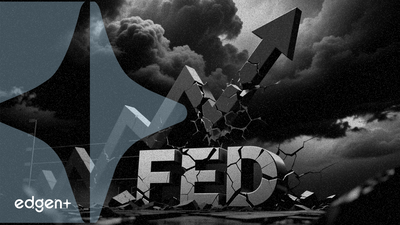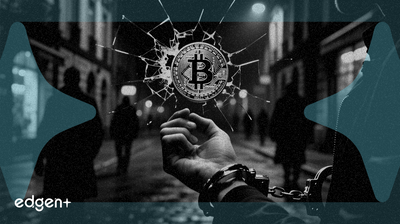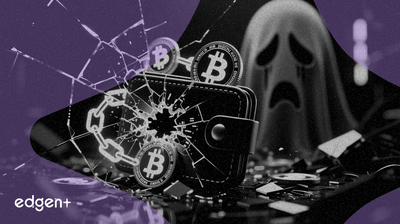返回


## 执行摘要 数据发布于12月6日当周,显示美国初请失业金人数增至23.6万人,超过市场普遍预期的22万人和前一周的19.1万人。这一高于预期的数字表明美国劳动力市场可能出现软化。这份报告进一步证实了越来越多的证据,包括招聘信息减少和裁员增加,表明经济增长势头正在放缓。因此,预计这一发展将增加**美联储**在其即将举行的会议上考虑采取宽松货币政策(包括降息)的压力。 ## 事件详情 **劳工部**的报告是劳动力市场降温的最新指标。初请失业金人数为23.6万人,比前一周显著增加,并超出市场预期,这表明有更多人被雇主解雇。这一趋势得到了其他近期劳动力市场数据的证实。职业空缺和劳动力流动调查(JOLTS)最近显示,裁员人数增至190万人,创下两年来的新高。此外,在线招聘信息大幅下降,尤其是在科技密集型大都市区。截至10月底,**西雅图**地区的招聘信息比疫情前水平下降了35%,而**旧金山**则下降了37%。 ## 市场影响 劳动力市场走弱对**美联储**的货币政策有直接影响。央行肩负着维持物价稳定和实现最大就业的双重使命。尽管通胀仍高于美联储2%的目标,但就业形势恶化的明确迹象为采取更鸽派的立场提供了强有力的理由。初请失业金人数的上升,加上招聘信息的减少,表明导致工资增长和通胀的紧张劳动力状况可能正在缓解。这种情况加强了美联储降息以刺激经济增长并防止更严重的经济下滑的论点。市场在报告发布后可能会消化短期内降息的可能性更高。 ## 专家评论 经济分析师对近期数据提供了不同的解读。白宫国家经济委员会主席**凯文·哈塞特**(Kevin Hassett)表示,这些数据可能因“调查方式存在问题”以及近期政府停摆导致的数据滞后而出现偏差。他坚称潜在的GDP增长依然强劲。相比之下,劳工经济学家**保罗·图雷克**(Paul Turek)指出,市场已转变为“人们追逐工作”的状态,这与往年“工作追逐人们”的环境不同。图雷克指出,利率上升以及围绕特朗普政府政策(如关税)的商业不确定性,是许多公司采取“不招不裁”策略的原因。 ## 更广泛的背景 初请失业金人数飙升发生在复杂的宏观经济环境中。**美联储**一直在应对持续的通胀和全球贸易不确定性,特别是关税对物价和企业投资的影响。尽管一些最严重的关税情景并未成为现实,但许多企业采取的“观望”态度对招聘产生了显著影响,尤其是在白领行业。科技行业的下滑,作为近年来就业增长的关键驱动力,凸显了更广泛的经济结构调整。随着美联储准备发布新的经济预测,这些劳动力市场数据将是一个关键的输入,可能影响央行对增长、通胀和未来利率路径的展望。

## 执行摘要 近期在欧洲和北美地区,一系列针对加密货币持有者的暴力犯罪浪潮,包括绑架和西班牙的一起谋杀案。这标志着从常见的数字诈骗和黑客攻击,升级为针对已知或被认为持有大量数字资产的个人的直接人身暴力。这些事件正在助长一种恐惧气氛,可能影响投资者情绪,并增加市场参与者的操作安全负担。 ## 事件详情 作为这一趋势的一个鲜明例子,一名男子在西班牙被绑架后遇害。据报道,他在试图逃脱绑匪时被枪杀。这一残暴事件并非孤立案件,而是2024年一系列类似犯罪中最暴力的结果。执法机构注意到,在包括**加拿大**、**法国**和**美国**在内的其他几个国家,存在以敲诈勒索加密货币为目的的绑架模式。这些事件表明,有组织的犯罪分子现在正在系统地以数字财富为目标,采用人身胁迫来绕过数字安全措施。 ## 市场影响 有针对性的人身暴力的出现,给加密货币投资者带来了新的、更切实的风险。这种“人为因素”的脆弱性——即攻击者通过直接威胁资产持有者来绕过复杂的加密——对市场有几个看跌的影响: * **投资者恐惧增加:** 人身伤害的威胁可能会吓退潜在的散户和机构投资者,他们现在可能认为风险已超出金融波动,延伸到人身安全。 * **对增强安全性的需求:** 这一趋势可能会推动对结合数字和物理保护的更复杂安全解决方案的需求。这包括从安全的冷存储金库到针对高净值个人的个人安全服务。 * **资产托管的转变:** 投资者可能不愿再自行保管大量加密货币,这可能导致他们更多地依赖受监管、有保险的托管机构和交易所,这些机构和交易所可以提供机构级的安全和资产保护。 ## 专家评论 金融犯罪分析师指出,这一趋势代表了犯罪策略的一种合乎逻辑但却残酷的演变。一位专家表示: > “犯罪分子追逐金钱。随着个人在数字资产中积累大量财富,他们就成了高价值目标。绕过密码是一回事;胁迫一个人在胁迫下进行转账是另一回事。后者需要的技术技能更少,但可能更有效。” 这一观点表明,只要个人被认为持有大量加密货币,他们就仍然是暴力犯罪分子的有吸引力的目标。 ## 更广泛的背景 历史上,加密货币领域的犯罪主要由数字原生攻击主导,例如交易所黑客攻击、网络钓鱼诈骗和勒索软件。向人身绑架和勒索的转变反映了围绕数字资产的犯罪生态系统的成熟。它突出表明,加密货币的假名匿名性,曾经是一种保护,但在身份暴露后也可能使受害者成为目标。这种新的威胁格局给执法部门带来了重大挑战,他们现在必须应对连接数字和物理世界的犯罪;也给行业带来了挑战,行业必须开发新的用户安全最佳实践,而这些实践超出了键盘的范畴。

## 事件详情 安全研究员 **ZachXBT** 的链上分析显示,一名加密货币投资者因私钥疑似泄露而遭受了约110万美元的重大经济损失。此次泄露影响了该用户在五个相互独立但又相关的区块链生态系统中的钱包,所有这些系统都与 **以太坊虚拟机(EVM)** 兼容。攻击者系统地抽走了资产,将其转换为 **以太坊** (ETH),随后将价值超过100万美元的330 ETH转移到去中心化加密货币混合器 **Tornado Cash**。这最后一步显然是为了匿名化交易历史并切断与被盗资金的链上联系,从而使追回资金变得极其困难。 ## 市场影响 这一事件再次强调了数字资产领域固有的持续安全风险,尤其是在资金的自托管方面。尽管只是单一事件,但它加剧了市场普遍的谨慎情绪,并对用户对钱包基础设施安全性的信任产生了负面影响。攻击者使用 **Tornado Cash** 凸显了隐私增强技术的双重性质。虽然因其隐私性而受到重视,但混合器经常被用于洗钱,引起了全球监管机构的持续关注。此类事件为加强对去中心化金融(DeFi)协议和隐私工具的监管审查提供了理由,可能导致更严格的合规措施,从而影响更广泛的生态系统。 ## 专家评论 安全专家指出,这种攻击模式——资产整合后进行混合——是数字资产领域网络犯罪分子的标准操作程序。目的是通过 **Tornado Cash** 等服务转移资金,以切断监管链,这使得执法部门和区块链安全公司的取证分析变得复杂。该事件再次提醒人们,私钥管理的操作安全性至关重要。正如一位分析师所指出的:“无论底层区块链多么安全,整个系统的安全性都取决于最终用户私钥管理的完整性。” ## 更广阔的背景 这次盗窃虽然是针对个人实施的,但它反映了更大规模、更有组织的网络犯罪团伙所使用的策略。对 **CyberArmyofRussia_Reborn (CARR)** 和 **NoName057(16)** 等被指与俄罗斯国家利益有关的组织的研究表明,它们利用加密货币进行非法资金流动的模式是一致的。最近美国对一名乌克兰国民涉嫌支持这些团体的起诉,凸显了国际社会为瓦解支持此类活动的金融基础设施所做的努力。匿名服务的使用是这些行动的基石,使威胁行为者,从个人黑客到国家支持的团体,能够以较低的立即被发现的风险为其活动提供资金并清洗网络犯罪所得。